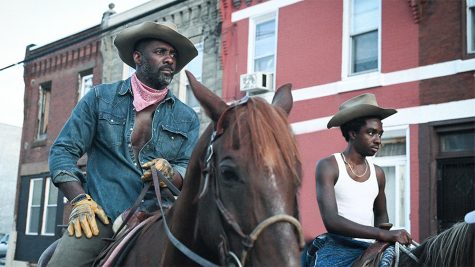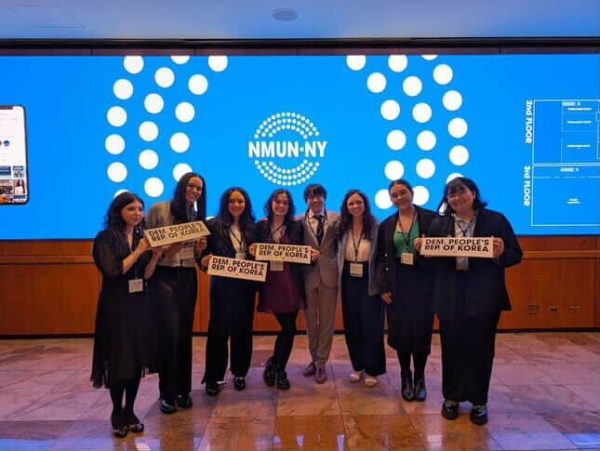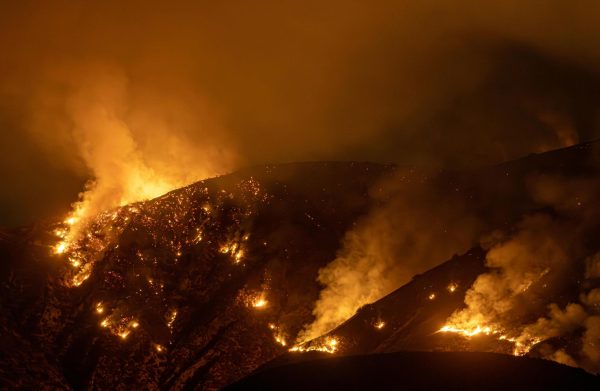The World’s Outlaws
What Pirates and Cowboys Show Us About The Inaccuracy of Historical Accuracy
Outlaws, bandits, fugitives and social pariahs. We often look through the lens of historic cowboy roots fighting against the influence of European settlers. We think of white men with their blue jeans, leather belts, and boots. Maybe you even envision cattle, ranch-workers and rodeos.
But what if your perception of the American cowboy isn’t what you originally thought of it to be? What if I told you that the American cowboys were a group of black men in present-day Philadelphia? And these modern-day bronco’s are fighting a new kind of settlement – growing gentrification in their communities.
Concrete Cowboy, based on Greg Neri’s young adult novel Ghetto Cowboy, follows a rebellious Black teen named Cole (Caleb McLaughlin) who gets dropped off with his father (Idris Elba) for the summer. When he arrives at his new home, he’s quickly thrown into the century-long history and culture of cowboys in Philadelphia.

___
The History Of Black Cowboys
Unbeknownst to many, the cowboys of this urban Western aren’t a creation of the film, they’re based on the real Fletcher Street riders, who happened to make appearances in the movie. Stories like the Fletcher Street riders are often hidden in literature and media just as many other minority group stories are. Though the popular image of the cowboys is white men, plenty of cowboys in the real-life Wild West were people of color.
Black cowboys in the American West accounted for up to 25 percent of workers in the range-cattle industry from the 1860s to 1880s, estimated to be at least 5000 workers according to the latest research done by the Smithsonian Institute. Many former slaves that had skills in cattle handling headed West at the end of the Civil War. Being a cowboy was one of the few jobs open to men of color who wanted to not serve as elevator operators or delivery boys or other similar occupations.
___
Representation In Literature
Of course, people of color being left out of literature has always been a common occurrence. Specifically, when talking about historical fiction, authors typically don’t include diverse characters because of the “historical accuracy” of the piece. They focus more on the accuracy of world-building, social structure, and fantastical elements, but tend to draw the line at contemporary reality.
“The answer tends to be as ugly as it is revealing,” Foz Meadows writes in PSA: Your Default Narrative Settings Are Not Apolitical. “It’s impossible for black, female pirates to exist anywhere, that pixies and shapeshifters are inherently more plausible as a concept than female action heroes who don’t get raped, and that fairy tale characters as diverse as Mulan, Snow White, and Captain Hook can all live together in the modern world regardless of history and canon, but a black Lancelot in the same setting is grossly unrealistic.”
Meadows, a Young Adult fantasy novelist, blogger, and poet, speaks on an important point about historical accuracy and the consistency of its usage. Things are only considered historically accurate if they fit this palatable image in your head. If that image is skewed racially, it’s going to show in writing, in media, and in representation in general.
“I think it’s important to normalize everything. Representation is an important aspect of that. But, I think representation needs to exist at all levels with these kinds of stories,” says Marymount’s Race, Class, and Gender in Media professor, Sara Martucci.

Shows like Bridgerton go completely against what’s “historically accurate” but they do it on purpose. During the Regency period, most Black and Brown people in Britain were enslaved or arranged to do domestic work, but in the show, we see POC in all positions of power with all different titles of nobility. This works in 2021 because we can dismiss our disbelief for the sake of the show, but it’s also an interesting example of historical accuracy and how well it fits into fantasy and historical fiction. If a world is already made up and fictional, why are writers so inclined to add elements of real-world social structure?
Well, if you ask Martucci, she’ll tell you that it all comes down to one thing: Power.
“Think about who is in leadership at major studios- it’s still majority white men, as are the founders of these projects and the leadership of the corporations who pay for advertising space during TV shows et cetera… Stories that center non-white characters in authentic, non-stereotypical ways have historically been seen as unimportant to tell or as potentially unprofitable. I don’t know if leaving out these stories is an excuse for racism so much as it is an outcome of racism.”
Having diverse writing rooms has been discussed many times before, but it’s important to note the impact that lack of diversity in writing can go so much further than a detriment to representation in media. Actual history is affected when you leave minority groups out of the picture.
Bridgerton makes new and important facts known about people of color being in positions of power during the Regency period. You’d actually be surprised how many Black people were in leadership roles all over the world, but it’s never discussed because of biased media. So this problem is no longer just media representation anymore, now we’re talking about actual history being reworked to fit the All-American vision.
___
A Different Kind Of Outlaw
Just as Concrete Cowboy shows us that black cowboys easily could have existed in history, Meadows mentions the existence of black pirates. Surprisingly, these two have more in common than you’d think. In a conversation with Dr. Dylan Craig, a professor at American University, he gives some insight into the exciting world of pirates and their institutional and racial structures.
“When I think about Black Cowboys and the sense of history, it isn’t what you think it is. It’s more interesting than that. That’s kind of a great place to start with when it comes to pirates.” Craig explained.
“Rebellion against a world order tells us something about the rules of politics at the time and the structures that constrained people. And this is the idea that by looking at society’s outlaws, you’re getting a sense of how society is built.”
After the Reconstruction of the South, freed slaves were still denied land ownership and other rights in many states. Because of this, many Black communities migrated West and worked as ranch hands for wages that offered more opportunities than the ones that existed for freemen in the South. So while, racism is the very thing stopping these cowboy’s stories from being told, lack of opportunities and discrimination is the very thing that pushed Black groups into becoming cowboys in the first place.
Similarly, old piracy arose out of conflicts over trade and colonization among the European powers and their rivals. Many buccaneers were enamored by piracy because they came from poorer areas and were in search of a way to make money and reprieve.
Dr. Craig continued, “There’s a lot of pirates who are simply greedy, violent men. There are pirates who are cruel. There are pirates who are racist. There are pirates who are rapists. Those folks are not rebelling against the system so much as they are enjoying the benefits of it without any of the recourse. But then you do get people who really seem to be into it as a mode of rebellion.”
Rebellion is a tricky word when it comes to pirates because so much of it can stem from self-interest. Pirates are known for stealing and killing at sea, but funnily enough, the many introductions of black pirates into history start because of their white counterparts’ thievery. So you’re a starter pirate, what’s the first thing you’re going to want to do? According to Dr. Craig, you’re gonna get your hands on a slave ship.
“Slave ships were great as pirate vessels because they were built to be fast with big haul large capacities. They were usually tough and so one of the things that enterprising pirates would do is go to the West coast of Africa and they’d wait for a slave ship and they would attack it,” Dr. Craig explained.
But then the question comes, what do you do with all of these enslaved people on board? While some pirates would free them and others would push them off and let them drown, some pirates would give them the opportunity to join in the crew and elevate them to a position of equality with the other people on board.
From there we hear stories like Diego El Mulato who fled Spanish enslavement in 1572 and was captured by or possibly joined the English privateer Francis Drake in 1572, becoming a member of his crew.
Francisco Menendez was a free Black militiaman who served the Spanish Empire in Florida during the 18th-century. In 1741, he was captured by the privateer Revenge, whose captain proceeded to sell Menéndez into slavery in the Bahamas.
Black Caesar was an 18th-century African pirate. The legends say that for nearly a decade, he raided shipping from the Florida Keys and later served as one of Captain Blackbeard‘s aboard the Queen Anne’s Revenge.
“There’s this joke that I say at the beginning of my class and it’s that the hidden subtitle of my class is ‘Piracy, it’s not just white dudes,’” says Dr. Craig.
“So I have no respect for the whole, no, we can’t have any Xs in the story or this is only a story for white men, because it’s women and it’s people with socially divergent sexualities and it’s huge Jewish pirate communities in the Caribbean and Muslim pirates and it’s people with mixed races.”
___
History As You Know It
Black people have always been there in history whether they were recognized or not. From pirates in the 1700’s and nobility in the Regency era to cowboys both after the civil war and today, we’ve been there. Media has silenced the voices of minority groups for so long that history has been scrubbed away and pushed to the side, but that doesn’t mean it never happened. Concrete Cowboy is one example of billions of minority stories out there that are waiting to be heard. And believe me when I say that they have a whole lot of history to be reclaimed.

Rayiah Ross is a senior majoring in digital journalism and minoring in creative writing. She has a focus on cultural criticism and social commentary.





